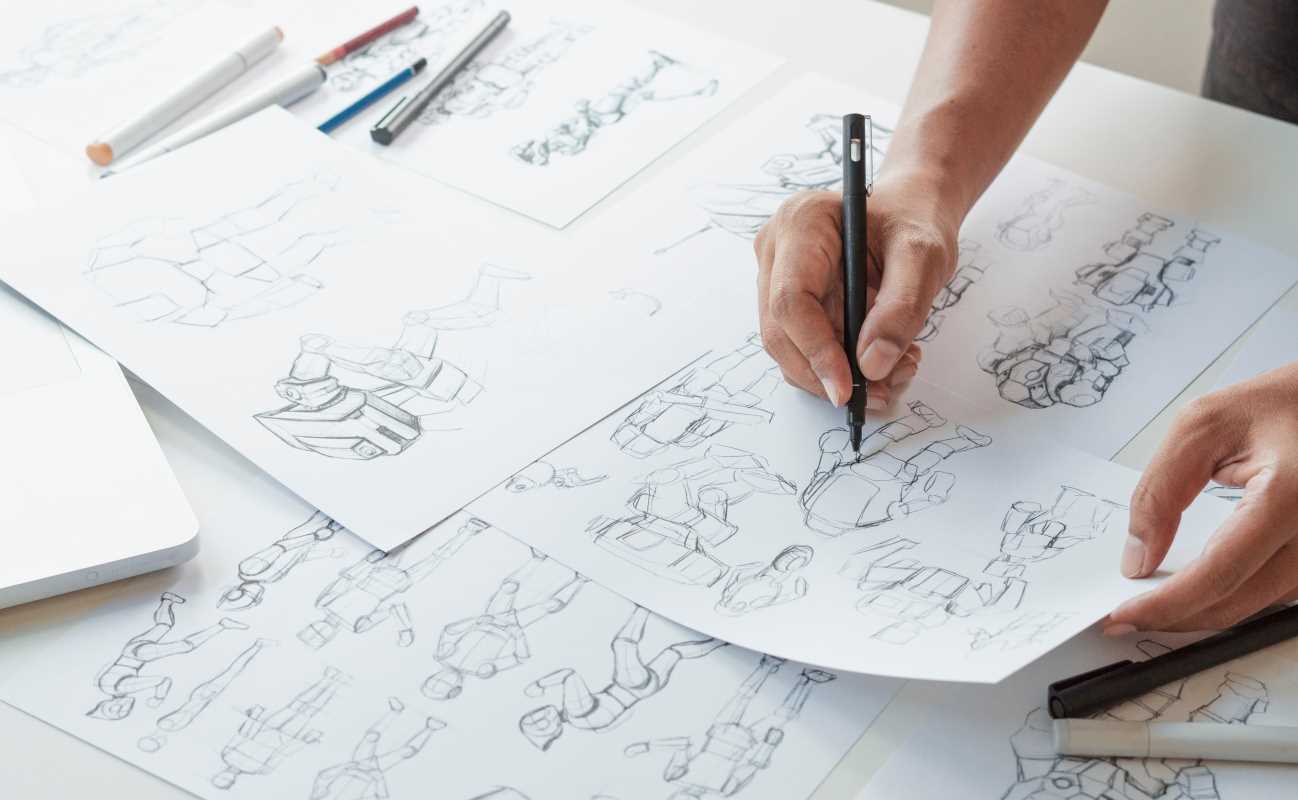Art and design have long been associated with traditional fields such as painting, sculpting, and printmaking. However, in the digital age, creativity is no longer confined to physical mediums. Technology has reshaped industries and opened doors for art and design majors to carve out exciting careers in tech-driven fields. Roles at the intersection of creativity and technology, such as UX/UI design, digital marketing, and game design, are booming as companies recognize the value of visual storytelling, user-focused design, and out-of-the-box thinking. For art and design graduates, this shift provides an opportunity to pursue innovative and lucrative careers while leveraging their unique skillsets.
The Intersection of Art, Design, and Technology
The boundary between art and technology has become increasingly blurred. Many tech-focused careers require the same creative thinking, visual communication, and problem-solving skills that art and design students cultivate during their studies. For example, tech products—from apps to websites—require thoughtful design to stand out in competitive markets. Consumers don’t just want functionality; they want products that are intuitive, visually striking, and enjoyable to use. Enter the artists and designers.
Fields such as UX (User Experience) and UI (User Interface) design are prime examples of this intersection. UX designers focus on creating seamless, user-friendly interactions, while UI designers take the reins on visual aesthetics, ensuring buttons, icons, layouts, and color schemes engage users effectively. These roles not only draw on an eye for design but also challenge professionals to think critically about user needs—a central theme in art and design training.
Similarly, tech industries require strong content across digital platforms, making skills in graphic design, motion graphics, and photography invaluable for roles in digital marketing. Meanwhile, industries like gaming and virtual reality thrive on the imaginative power and storytelling prowess of animators, illustrators, and 3D artists. Artistic talents are indispensable in creating rich, immersive experiences that excite users while pushing the boundaries of technology.
Why Art and Design Skills Thrive in Tech
Tech companies value creativity, and art and design graduates bring unique qualities to the table that set them apart in the industry.
- Creativity & Ideation: Tech often requires solutions to new problems, and creativity is essential for imagining the possibilities. Art majors excel at thinking differently and exploring fresh ideas, helping create innovative user interfaces, advertisements, or experiences.
- Visual Communication: Designers understand how to communicate complex concepts visually, a skill that’s ubiquitous in the tech world. Whether through infographics, websites, or intuitive software design, compelling visuals help brands and products succeed.
- User-Centered Problem Solving: Art and design students are trained to empathize with their audience, understanding how users view and interact with a piece of work. This mindset is invaluable in roles that focus on enhancing user experience, such as product design or website development.
- Hands-On Experimentation: Many art majors bring experience with prototyping, whether through crafting models or experimenting with different mediums. This hands-on approach to testing and refining ideas translates seamlessly into tech development workflows.
Successful Career Paths
Art and design graduates are thriving in many tech-driven roles. Some examples include:
UX/UI Designer
Graduates with strong design and analytical skills step into the world of UX/UI to bridge the gap between creativity and functionality. Take Jessica Walsh, a graphic designer turned creative leader in digital design. Her career highlights how great visuals can transform interactive products.
Game Designer
With video games as a dominant entertainment medium, illustrators, animators, and 3D artists find opportunities contributing to titles like The Legend of Zelda or The Last of Us. Game designers blend art with storytelling and technical skills for groundbreaking gaming experiences.
Digital Marketing Specialist
Marketing teams need visually compelling campaigns to attract users across platforms like Instagram and YouTube. Art majors create engaging visuals and content strategies, ensuring a brand’s voice resonates with its audience.
AR/VR Developer
Virtual and augmented reality is redefining industries like gaming, healthcare, and training simulations. Artists skilled in 3D modeling and animation find roles crafting imaginative, immersive digital worlds.
Creative Technologist
This emerging role combines art and engineering, with professionals working on designing interactive installations, apps, or promotional tools that blend creativity with advanced tech.
Tips for Art and Design Majors Transitioning to Tech
Wondering how to break into the tech world? Here are some steps to help art and design students and recent graduates begin their tech-driven career journeys:
Learn the Basics of Coding
While you don’t have to become a coding expert, learning the principles of HTML, CSS, or JavaScript can give you an edge, especially in roles like UX/UI design or front-end development. Beginners can start with free resources like Codecademy or Khan Academy.
Build a Digital Portfolio
A strong online portfolio showcasing your creative work is essential in tech-driven roles. Include web-friendly projects, mockups, and examples of visual storytelling to demonstrate your range and digital skills.
Branch Into Relevant Tools
Get comfortable with industry-standard software like Adobe Creative Suite, Figma, Sketch, and Blender. If you’re exploring 3D design or gaming, familiarize yourself with programs like Unity or Unreal Engine.
Gain Experience Through Projects
Seek freelance work, internships, or collaborations with peers in tech-related projects. For instance, design the user interface for an app prototype or animate a short promotional video for a startup.
Network with Tech Professionals
Build professional connections by attending industry events, joining LinkedIn groups, or participating in hackathons. You can also reach out to alumni who have transitioned into similar roles to learn from their experiences.
Stay Curious and Keep Learning
Tech evolves rapidly, and staying ahead means continuing to learn tools, trends, and industry best practices. Online platforms like Coursera, Udemy, and Skillshare offer courses tailored to blending art and tech.
Careers in the tech industry place a premium on creativity, vision, and innovation—qualities that art and design majors naturally embody. The pathways into the green territory between design and technology are vast and varied, from improving user interfaces to designing immersive gaming experiences. Transitioning into a tech-driven role may require adapting new skills, like coding or software expertise, but the foundation of creativity and problem-solving remains key.
If you’re an art and design major dreaming of playing a defining role in the tech world’s future, now’s the time to take the leap. With determination, adaptability, and an eagerness to learn, you too can build a career that blends your artistic passions with cutting-edge technology.







